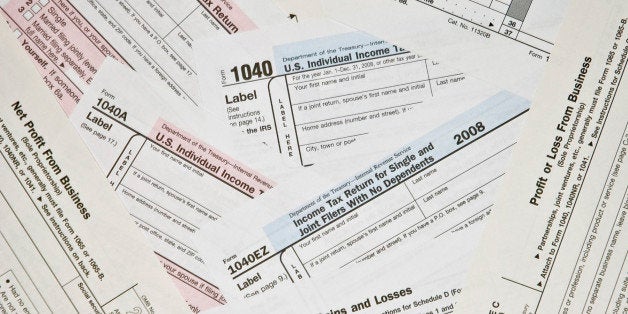
In 1943, the government began requiring that employers track and report on employee compensation. The resulting W-2 is now part of an annual ritual. Each January, employers pull together an array of information to generate a W-2 for each employee who worked for them at any point during the year before. The form is then required by the IRS to be mailed out no later than January 31, so the employee can file his or her taxes.
This year, health care reform has created a new, more daunting form that employers with more than 50 full-time employees must compile for their employees -- Form 1095-C. Similar to the W-2, employers must mail this new form out to employees by January 31 so that they can complete their taxes. Millions of Americans will receive this for the first time this upcoming January.
While the W-2's main purpose is to communicate pay information to the IRS, the 1095-C's function is to communicate health insurance information. Historically, employers have never had to keep up with this kind of information, and as a result, the form will likely cause many employers headaches.
Although there are several new health care reform requirements taking effect this year, many agree that the 1095-C is the one that could trigger employers to completely rethink their current HR systems.
Following are three common questions about the 1095-C.
1. What information is on it?
The form starts out asking for the typical employee profile information (name, address, etc.). Eventually, it begins asking about health insurance. First, it asks whether or not the employer offered health insurance to the employee for each month of calendar year 2015, and what type of health insurance it was. The IRS supplies codes (options 1a through 1i) for the employer to use to communicate the type of health insurance that was offered to that employee for each month of 2015.
Then, the employer specifies the cost of the cheapest monthly premium available to the employee under the offered plan for each month during the year. This is not necessarily the same for each month, as if the employer renewed its plan in the middle of the year it is likely it would change at that point.
Finally, the employer indicates the "4980H Safe Harbor Code" that applies for the employee for each month of 2015. These codes indicate whether or not the employee was on the plan for each month and if they were not, whether or not the employer should be subject to a penalty. Self-insured employers are then required to give the name and social security number or birthdate for every dependent of the employee and for which months during the year the dependent had coverage through the employer.
2. Why does the IRS need this form?
The IRS is supposed to keep up with whether or not individuals are eligible for subsidies on the individual health insurance exchanges, as well as whether or not employers are liable for penalties for not offering qualified coverage to their employees. This new form helps the IRS accomplish both tasks.
Keep in mind that employees who are offered qualified coverage by their employer are not eligible for subsidies. So, if an employer offered qualified coverage to an employee, but that individual collected a subsidy anyway, the IRS would "reclaim" that amount. Conversely, if the employer did not offer qualified coverage to all full-time or full-time equivalent employees, causing them to be eligible for a subsidy, the company should expect to pay a penalty.
3. Who is responsible for creating these forms?
This is a great question that many HR departments are asking right now. Just like with W-2s, these forms need to be created for every employee the employer had in 2015 -- even employees who were terminated, left the company or who were never eligible for the health plan in the first place. While the information that the form requires certainly exists, it's generally not easily located in one place. This alone makes compiling the form an administrative challenge.
Many payroll companies have seen these forms as falling within their core competencies since they already do a lot of tax-related filings for employers. That said, it is generally the health insurance broker who advises the employer on health care compliance. It is also the broker who is in the best place to pull together a lot of the information required to be on the 1095-C. This could mean the task could fall on his or her shoulders.
Ultimately, the best scenario for employers would be that these forms get automatically generated from the company's online HR or benefits administration platform. Unfortunately, the large majority of employers have not fully transferred benefits administration to an online or digital platform. Because of this, many can expect the compilation of data to be an extremely manual process.
While the compilation may be manual, the IRS is requiring that the submission of the data be electronic for many employers, specifically those with more than 250 employees. These employers must either become accredited and capable of electronic submission to the IRS, or work with a vendor who is.
It will be interesting to see how this part of health care reform gets up and running.
